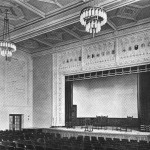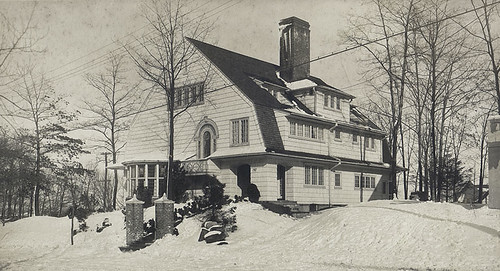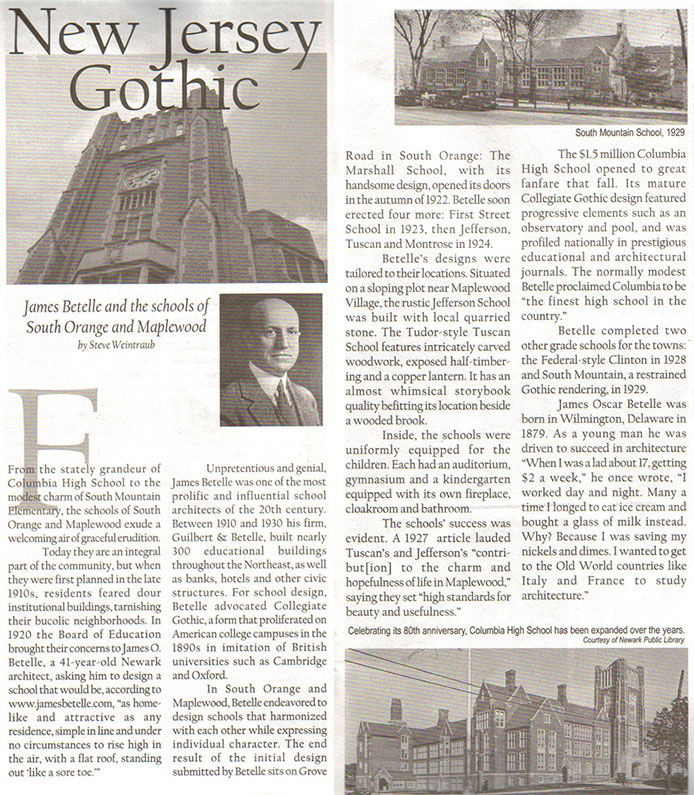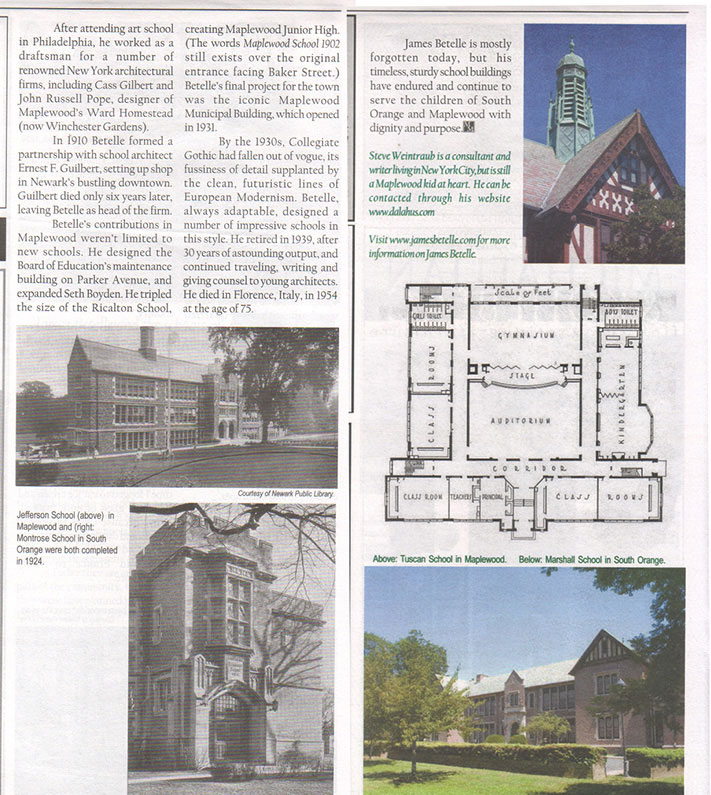Office parties—when the staff lets their hair down, the boss awkwardly pretends to be “one of the gang”, and at least one person gets embarrassingly drunk—are a staple of the corporate world. These days, such events are limp, pathetic affairs, attended with the same enthusiasm as your average dental cleaning.
Last week, during one of my periodic sweeps of the Google book archive, I came across a tantalizing snippet of an article from Pencil Points magazine referring to a “Sketch no. 8, Doings in the Hive of the Three Busy B’s, Betelle, Bauer, Behee”. If this was a drawing of the men in their office it would be a great find, as no photos like that have turned up. Well, it ended up not being a reference to an artistic sketch, but rather a theatrical one—as part of an elaborate office party.
The soiree was held on the evening of February 18, 1922, and apparently nautical themed (“all hands”, “Pilot of the Ship”, etc.). Written in the playfully satiric tone of a drafting room insider, the article gives a tangible feel for these people, at a time when an office party was not only well regarded, but put together with zeal, humor and sincerity. Just the image of Betelle — “Jimmy” — dancing with the ladies into the “wee sma’ hours of the morning” is priceless.
OFFICE FORCE OF GUILBERT & BETELLE HOLD GET-TOGETHER PARTY
A get-together party which was so great a success that it will undoubtedly be followed by other occasions of a similar nature, was held on the evening of February 18 by the office force of Guilbert & Betelle, Architects, Newark, N.J. The purpose was to foster a spirit of co-operation and good fellowship between the members of the firm and the members of the office force, also among the men themselves.
At twelve o’clock noon all hands turned to and cleared one of the large drafting rooms of drafting tables, horses and the instruments of torture. The various committees attended by the nouveaus bearing crêpe paper, table covers, pots of paste, nails, etc., proceeded to decorate the room and erect the “amphitheater” and stage. Palms and flowers were then arranged about the room to complete the transformation. The other drafting rooms and offices were turned into cloak room, smoking room, refreshment emporium, etc.
At five o’clock the entire suite of rooms was in readiness. Seven-thirty found those who were to participate in the festivities assembled, and the deck cleared for “active service.”
The first action encountered was the bombardment of “big eats” by the colored gunners, ably captained by “Our Ever-hungry Kit-Kat.” Sustenance disposed of and the remnants cleared away, the following program was rendered: “Program—Divers Sketches Dug Up From Davey Jones’ Locker for the Occasion of the Gathering of the Force of the Office of Guilbert & Betelle, Together with their Better 99.9 and Friends, Sisters, etc. Eats (Not imperative, but helpful to the following). Sketch No. 1, A Few Remarks by the Pilot of the Ship, Mr. J. O. Betelle. Sketch No. 2, Monologue—-‘Her first Visit to the Butcher,’ Miss Lewellyn, P. Lansing, Daughter of Our Lansing. Sketch No. 3, Our Lansing at the Piano. Sketch No.4, ‘Saving a Seat at a Benefit,’ Miss Lansing. Sketch No. 5, Clothes-pin Practice for Home Usefulness. Sketch No. 6, Solos by Mrs. C. M. Rheinhardt, ‘The Lilac Tree’ and ‘The Crow’s Egg.’ Hornpipe alias Jazz. ‘Punch Brothers Punch.’ Stand by for two minutes for Part Two. More Sketches. Sketch No. 7, Declamation., ‘Casey at the Bat,’ by Mr. Robert Sands (Wan of the Min). Sketch No. 8, Doings in the Hive of the Three Busy B’s, Betelle, Bauer, Behee.’ by Messrs. Elsasser; Lindsley, Sands and Ferriss. Sketch No. 9, Duet: ‘The Force,’ Mr. Fred Kuchler, with piano background by Mr. Lansing. Sketch No. 10, Chorus, by the Office Singing Society; Herr Sands, leader, Herr Kuchler, Herr Kuglemann, Herr Heinerwald, Herr Lindsley, Herr Elsasser, Herr Ferriss, Herr Langmann. Sketch No. 11, Peanut Practice for Persistent Pencil Pushers (Contest). All hands on deck—prize, the peanut. Hornpipe 2. More Punch. Also Hornpipe 3. Ad Lib. Go as far as you like. Ladies are cautioned not to rush the Pilot for Dances, we need him in the business. Mr. Bauer dances but is indifferent about it. Mr. Behee does not care for dancing at all. Station B-B-B, Located at Newark, N. J. We are signing off. Good Night.”
A feature of this program that brought great applause was “In the Hive of the Three Busy B’s,” by Fred A. Elsasser, Girard Lindsley, Robert J. Sands and John T. Ferriss. In this sketch the members of the firm, James O. Betelle, Charles Bauer and Grant A. C. Behee were caricatured. “The Force,” a duet, the words of which were written by Fred Kuchler, was made up of amusing verses about the various members of the office force, and caused much merriment.
After the rendering of the program there was dancing into the “wee sma’” hours of the morning, during which “Jimmy” made it a point to dance with every lady, one of the ways in which he showed his good fellowship and hearty co-operation in making the party a success.
![]()






